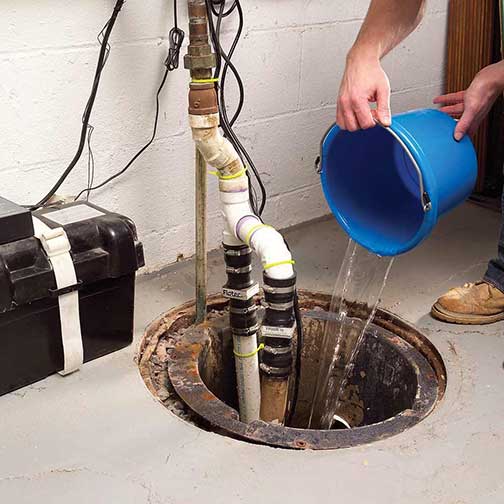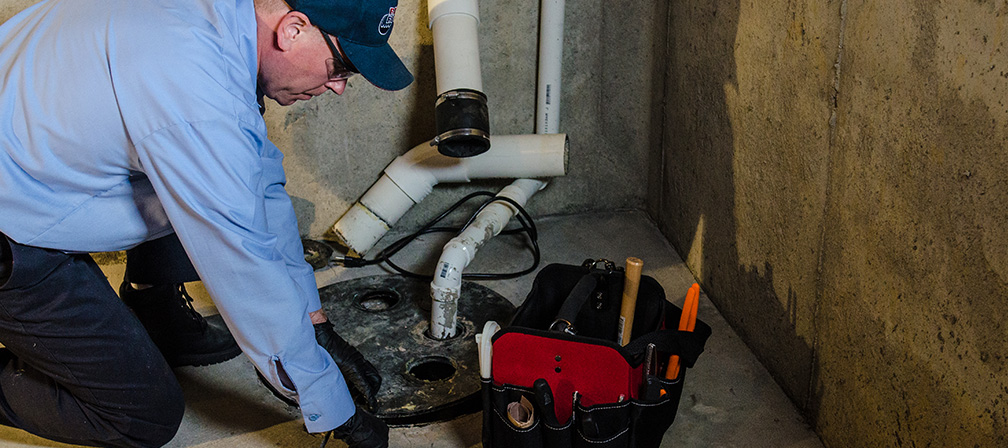Your Definitive Guide to Taking Care of a Sump Pump
Your Definitive Guide to Taking Care of a Sump Pump
Blog Article
Almost everyone seems to have their own unique assumption involving How To Effectively Clean A Sump Pump.

Sump pumps are important components in numerous homes, particularly in locations prone to flooding or excessive dampness. They assist prevent water damage by effectively eliminating excess water from cellars or crawl spaces. Nonetheless, like any other device, sump pumps require routine maintenance to ensure they work properly when required one of the most. Cleaning your sump pump is a crucial part of its upkeep, and understanding just how to do it effectively can save you from costly repairs and prospective disasters.
Intro
Maintaining a clean sump pump is crucial for its proper performance and longevity. Neglecting this essential job can lead to obstructions, breakdowns, and eventually, water damage to your home. For that reason, learning how to clean up a sump pump is critical for property owners that rely upon these tools to maintain their cellars completely dry and safeguarded.
Comprehending the Sump Pump
Before diving into the cleansing process, it's essential to have a basic understanding of just how a sump pump functions. Commonly set up in a pit or container below the cellar floor, a sump pump contains several vital parts, consisting of a pump, a float button, and a discharge pipe. When water collects in the pit, the float switch triggers the pump, which after that pumps the water out through the discharge pipe, away from the structure's structure.
Indicators of a Dirty Sump Pump
Knowing when your sump pump requires cleansing is vital for avoiding prospective breakdowns. Some typical signs that indicate a dirty sump pump consist of odd noises during operation, reduced water flow, and noticeable particles in the pit. If you notice any one of these signs, it's vital to cleanse your sump pump immediately to prevent any kind of additional concerns.
Getting ready for Cleaning
Prior to you start cleansing your sump pump, it's important to take some safety and security preventative measures. Beginning by shutting down the power to the pump to prevent any type of electrical crashes. In addition, put on suitable protective gear, such as gloves and goggles, to protect on your own from dirt, particles, and prospective pathogens.
Step-by-step Guide to Cleaning a Sump Pump
Shutting Off the Power
Begin by detaching the power supply to the sump pump to prevent any mishaps while cleansing.
Removing Particles and Dust
Utilize a bucket or a scoop to remove any kind of visible particles, dirt, or sediment from the sump pit. Dispose of the particles properly to prevent it from clogging the pump or the discharge pipeline.
Cleaning up the Pump and Drift Switch
When the pit is free from particles, very carefully get rid of the pump from the pit. Check the pump and the float button for any kind of indications of damages or wear. Use a soft brush or towel to clean the surfaces and get rid of any type of gathered crud.
Purging the System
After cleaning up the pump and float button, flush the sump pit with clean water to eliminate any kind of remaining dirt or sediment. This will certainly aid guarantee that the pump runs smoothly and effectively.
Checking for Correct Performance
Before reinstalling the pump, do a fast test to guarantee that the float button triggers the pump properly. Put some water right into the sump pit and observe the pump's operation. If everything is working properly, you can reconstruct the pump and reconnect the power supply.
Upkeep Tips to Maintain Your Sump Pump Clean
Along with periodic cleaning, there are a number of upkeep pointers you can comply with to maintain your sump pump in ideal problem:
Conclusion
Cleansing your sump pump is an important element of its maintenance and guarantees that it runs efficiently when you need it one of the most. By following the steps laid out in this overview and integrating routine maintenance right into your regimen, you can extend the life-span of your sump pump and protect your home from water damages.
6 STEPS ON HOW TO CLEAN A SUMP PUMP PROPERLY
UNDERSTANDING SUMP PUMPS
Your sump pump plays a crucial role in protecting your home by managing and removing excess water. It primarily functions as a “shield”, guarding your basement against the damaging effects of water accumulation. The pump is housed in a sump pit in the lowest part of your basement, and its job is to pump out any water that collects there.
During heavy rainfalls or when snow melts rapidly, water can infiltrate your basement, posing potential risks like flooding, structural damage, and harmful mold growth. Here, the sump pump springs into action, pumping out the intruding water and directing it away from your home.
SAFETY FIRST
Before cleaning, remember to prioritize safety. Disconnect the sump pump from the power source to prevent any accidental electric shocks. Also, wear sturdy gloves to protect your hands from any sharp or dirty components within the pump.
REMOVE THE SUMP PUMP
After ensuring your safety, the next step is to remove the sump pump from its pit. Doing this might require careful maneuvering as you don’t want to damage any pump components. Once removed, clean the sump pit to remove any accumulated debris or sludge.
INSPECT THE PUMP
Inspect the pump for any visible signs of wear or damage. Check the power cord, float switch, and impeller housing. If any components look worn out or damaged, consider replacing them to ensure optimal performance.
CLEAN THE PUMP
Thoroughly clean the pump with warm, soapy water. Make sure to rid it of any dirt, gravel, or other debris that might impede its performance. You can use a toothbrush to clean the small, hard-to-reach parts of the pump.
REINSTALL THE SUMP PUMP
Reinstall the pump into the sump pit Make sure it’s positioned correctly to remove the water effectively Once it’s back in place, reconnect it to the power source TEST THE PUMP
Finally, pour some water into the pit to ensure the pump works correctly. It should start automatically and begin pumping out the water; if it doesn’t, check the power source and the positioning of the pump.
Remember, while cleaning your sump pump is an essential part of home maintenance, hiring a professional plumber for a thorough inspection and cleaning at least once a year is also important. This will ensure that your pump is in optimal condition, ready to protect your home from potential water damage.
BEST PRACTICES FOR CLEANING SUMP PUMP DISCHARGE PIPES
Regular Inspection: Regularly inspect your discharge pipes, especially during heavy rainfall or snowmelt periods. Look for any signs of blockage or damage. Early detection of problems can prevent serious issues down the line. Periodic Cleaning: Over time, sediment and debris can accumulate in the discharge pipes, impeding the flow of water. Regular cleaning helps keep the pipes clear and functioning efficiently. You can use a high-pressure water jet to effectively clean the pipes. Insulation During Winter: In colder climates, discharge pipes can freeze, blocking the outflow of water. Protect your discharge pipes from freezing temperatures by insulating them with foam pipe insulation. This will ensure the sump pump can continue to discharge water even in freezing conditions. Proper Positioning: The discharge pipe should be positioned to direct water away from your home’s foundation. Improper positioning can lead to water seeping back into the basement. Ensure the pipe is long enough and angled correctly. Installation of a Check Valve: A check valve prevents water from flowing back into your sump pit after the pump has pushed it out. Installing a check valve helps maintain the efficiency of your sump pump and reduces the risk of flooding. Minimize Pipe Turns: Every curve or turn in the discharge pipe can decrease the efficiency of water flow. By minimizing turns and bends in your discharge pipe, you can increase the efficiency of your sump pump. https://www.fullspeedplumbing.com/how-to-clean-a-sump-pump-properly9999/

Hopefully you enjoyed reading our topic about How To Effectively Clean A Sump Pump. Thank you for taking a few minutes to browse our blog post. So long as you liked our blog posting plz do not forget to pass it around. We value your readership.
Schedule Appointment Report this page